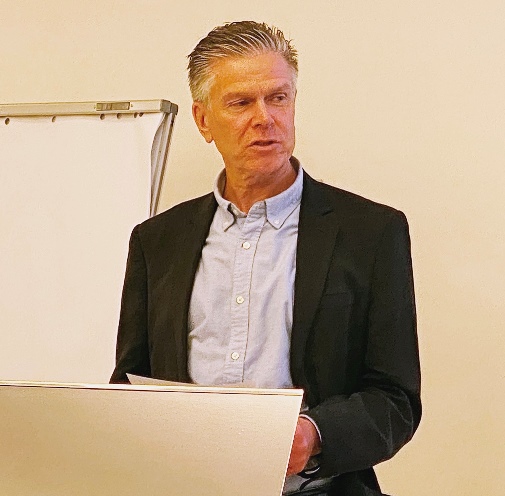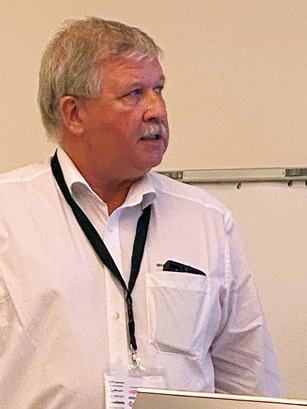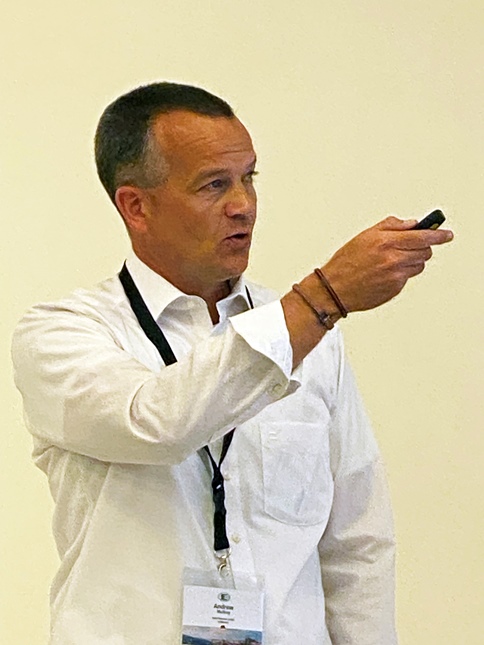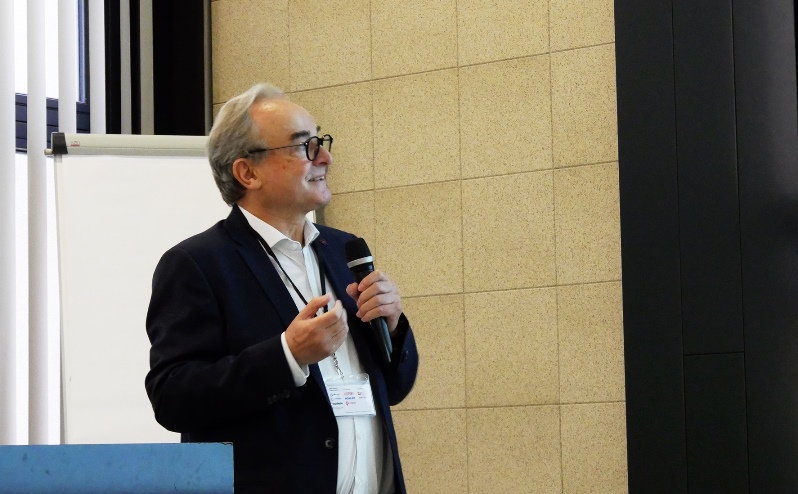2022 FEIBP Congress: Raw Material Market Reports
Bristle | Reinhold Hörz (DKSH Switzerland Ltd)
Supply Chain Problems
I cannot remember when previously we ever had such huge problems with our worldwide supply chain service providers — be it sea freight or land freight. Everybody was affected by this issue and I have to apologize to my customers for this.
The contradictory situation right now is that on the one side, we along with our customers are still suffering from the above-mentioned delay of lots of containers, but on the other side we can already see increasing stocks and “clearance sales.”
I am seeing this situation in my daily business discussion in all of our business fields. Partly we still have terribly delayed goods, but on the other hand, everyone is reluctant to buy for 2023.
Sea freight costs did go down from 10.000 USD in January of 2022 per 20 feet TCEU to 6.000 USD per TCEU in September from Shanghai to Hamburg. However, we are still at an all-time high for sea freight rates — remember in the past we paid around 1.200 USD.
Additionally, there is a severe shortage of truck drivers all over Europe and land freight transportation charges have doubled.
Market For Filaments And Bristles
First off, for those who are buying in Euros or corresponding currencies, there is a price increase of around 18% depending on the period of time.
Notably, reduced demand has kind of overshadowed the fact that in some items we still have shortages, which are good quality black 51mm in 90 percent tops and long sizes black 89mm and up.
Synthetic Substitution Outlook
Hörz offered the following statement from Wang Yong of DKSH Shanghai on synthetic substitution:
For the substitution of natural bristle, the availability of synthetic filament is sufficient to supply the paint brush industry requirement. The competition in the synthetic filament business is increasing, especially with the current quiet market situation. The competition is not only on price but also on quality. The HIB is getting more and more close to natural bristle quality. It will speed up the pace of the substitution.
We think the demand will gradually come back in 2023 and the brush filament industry itself has been adapted to supply the new inquiries. But there are still other issues that are uncertain/unpredictable, like how long will the COVID influence continue in China. The government still firmly insists on a zero-tolerance COVID policy, which means keeping manufacturers open and production running is not the top priority when a new COVID outbreak occurs. That will be a challenge to steady and sustainable supply.
Fine Hair | Mark Samuel (Mark Samuel Trading Co. Ltd.)

It will come as no surprise to hear that in a world of rising prices and high inflation, we now see a fall in the price of sable hair, albeit a rather small one! The fall comes on the back of unprecedented large increases over the last three years where we have seen increases of around 100 percent, meaning average prices of Chinese sable going from 4K to 10K, with some longer lengths of European dressed approaching $20K.
Unsurprisingly, demand has slackened as buyers look for alternative synthetics and sable mixtures, but certain applications still require the real thing. As mentioned, prices have fallen but this is not only because of weak demand but because of the strength of the dollar against the RMB, and if you’re buying in Euros (or worse Sterling) you won’t notice much of a fall.
A further reason for not seeing steeper falls is that supply is still very limited, and it’s unlikely that we’ll see much change in fresh supply when the next season starts this winter.
Squirrel hair prices increased by about 20 percent (more in Euros) and shorter lengths 35-50 mm by even more as demand outstrips supply. Most other types of fine hair have seen small increases as dressing factories close and wages increase.
The situation in Russia has had a limited impact as most supplies are not exported directly to Europe but to China.
World Steel Production | Holger Kruse (Gustav Wolf GmbH)
 All European market participants, including us as private individuals, have become acutely aware of how closely the economy is networked globally down to the last detail. Decades of globalization always had a positive impact and that was the basis of the economic and thus also political orientation of the community of states, ensuring jobs and prosperity in the west, and especially in Central Europe.
All European market participants, including us as private individuals, have become acutely aware of how closely the economy is networked globally down to the last detail. Decades of globalization always had a positive impact and that was the basis of the economic and thus also political orientation of the community of states, ensuring jobs and prosperity in the west, and especially in Central Europe.
The external disruptive factors in recent years, be it customs barriers or pandemics, or even currently a war in a previously unimaginable proximity to Europe, have shown all participants the extreme vulnerability of the “global division of labor.”
The Europe-wide energy crisis resulting from the Russian war of aggression is certainly the most severe disruption of the entire European economy to date, with significant effects on national GDPs, debt rates, etc. The social consequences are also unknown, with the impact most likely to be seen in the various upcoming national elections.
For the steel industry, its processors and consumers, the energy crisis is indeed threatening the very existence of the industry, as gigantic amounts of electricity and natural gas in the terawatt range are consumed here every year. The extreme rise in energy costs is already causing plant shutdowns in all areas of the steel industry, as well as in other energy-intensive industries such as the chemical or building materials industries.
2025 Green Steel Target
The Green Steel project promises an almost 95% reduction in CO2 emissions in the steel industry of as much as 60 million tons p.a. through the use of green hydrogen. In addition to the large investment costs (in the 2-digit billion range), the project is heavily dependent on the power supply in the respective economic zones. Thyssen-Krupp, for example, currently calculates the total energy requirement of its biggest site, Duisburg, at 4.5 TWh. For the conversion to climate neutrality, the energy requirement increases tenfold to 45 TWh!
From today’s point of view, there are obviously still many unanswered questions, starting with the technical feasibility to financial viability and availability of resources.
Synthetic Fibers | Andrew McIlroy (Perlon GmbH)

In Europe, we have faced a very turbulent time in the raw material markets for plastic over the past 18 months. In 2021, the raw materials market was dominated by poor availability, long lead times and of course, multiple price increases passed down the supply chain from polymer manufacturers.
After a short period of respite towards the end of 2021 and in early 2022, the start of the war in Ukraine again led to a further increase in prices and added further fuel to the fire in the form of skyrocketing energy prices. The high price of energy is now the main justification from polymer manufacturers for further price increases. For processors of polymer — for monofilament extrusion and injection molding, the main issue is the price of electricity.
Companies that had fixed price contracts for energy last year are facing up to ten-fold price increases per KWh. This issue is likely to be just as serious as the raw material price issues we faced in 2021.
Availability of polymer on the whole has improved this year but it is anyone’s guess as to when pricing may stabilize in the future.
See full coverage of the 2022 FEIBP Congress in the November-December Brushware Digital Edition.



